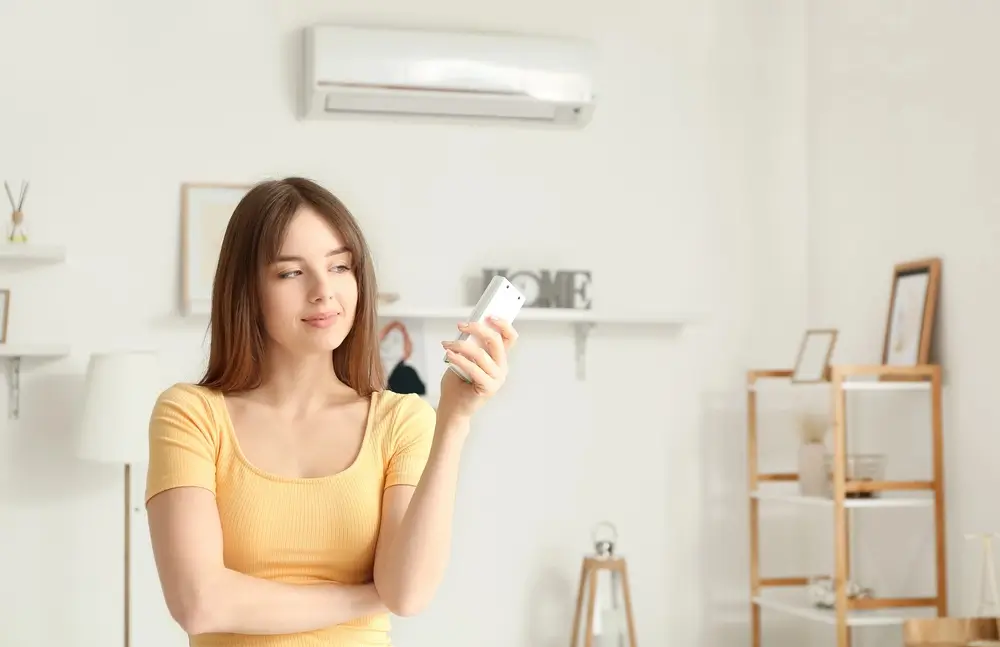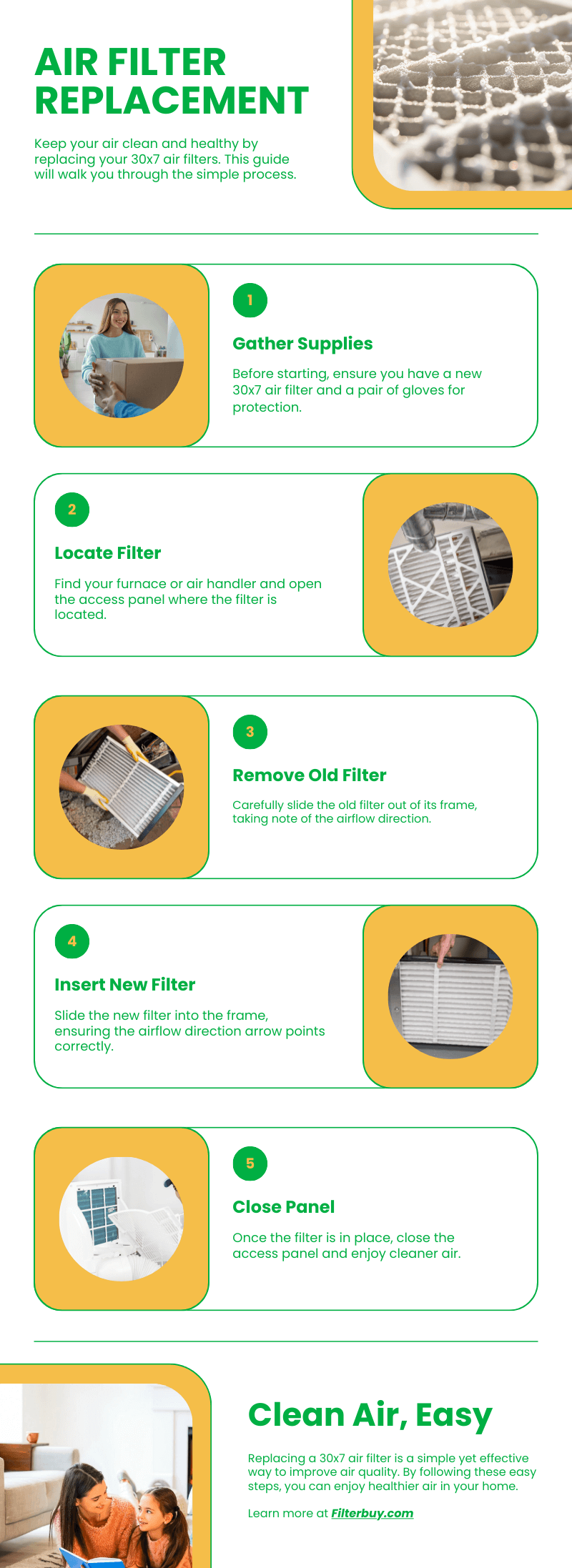Guide to MERV Ratings for 30x7 HVAC Filters
Quick Answers
30x7
A 30x7 air filter is a narrow, custom-fit size often used in tight return spaces. In our field experience, most systems run best with MERV 8–11 in this size, since higher MERV ratings can restrict airflow in narrow ducts. Replace every 30–90 days and make sure the filter fits snugly with no gaps.
Top Takeaways
- Choose the MERV rating your HVAC system can support.
- MERV 11–13 improves air quality but may restrict airflow in older systems.
- A proper 30x7 filter fit is essential for performance.
- Indoor air is often 2–5x more polluted than outdoor air.
Monitor airflow and replace filters on a regular schedule.
What This Means for Your 30x7 Filter Choice:
- Match the rating to your home’s air quality needs.
- Consider your system’s age and airflow capacity.
- Choose the highest MERV rating your HVAC system can support without pressure issues.
With a quick comparison and a system-appropriate choice, your 30x7 air filter can boost air quality, reduce dust, and help your HVAC run more efficiently.

“After years of repairing and testing HVAC systems in Delray Beach, we’ve seen that the best MERV rating for a 30x7 filter isn’t the highest one—it’s the one your system can actually breathe through. The sweet spot is choosing a filter that improves air quality without creating the airflow restrictions that quietly strain your equipment over time.”
Essential Resources to Choose the Right 30x7 Air Filter—Backed by Real Field Experience
1. EPA: Clear, No-Nonsense Filtration Guidance We Trust in the Field
2. ASHRAE: The Standards We Rely On During System Evaluations
3. Energy Star: Practical Insights on Filter Resistance and Efficiency
4. CDC: Health-Focused Air Quality Information for Families
5. U.S. Department of Energy: How Filters Affect System Load in Real Homes
6. NIH: Research-Backed Evidence on Filtration Performance
7. U.S. Consumer Product Safety Commission: Safety Essentials for HVAC Maintenance
Supporting Statistics
1. Indoor Air Is Often 2–5x More Polluted Than Outdoor Air
- We frequently measure higher particulate levels inside Delray Beach homes, especially with older ducts.
- EPA confirms indoor air can be 2–5 times more polluted.
2. MERV 11–13 Filters Capture Up to 90% of Fine Particles
- ASHRAE notes these filters capture 85–90% of 1–3 micron particles.
3. Restricted Airflow Can Raise Energy Use by 15%+
- We often diagnose high static pressure in systems using overly restrictive filters.
- DOE reports airflow issues can increase HVAC energy use by 15% or more.
Final Thought & Opinion
Choosing the right MERV rating for a 30x7 air filter isn’t about going as high as possible. It’s about matching the filter to what your HVAC system can realistically handle. That’s a lesson we’ve learned repeatedly in homes across Delray Beach.
What we see in the field:
- High-MERV filters often restrict airflow in older or undersized systems.
- Moderate-MERV filters can deliver excellent air quality when the system is well-balanced.
- The best results come from pairing filtration needs with system capacity.
A practical approach:
Identify your real air quality concerns.
Choose the highest MERV rating your system can support safely.
Avoid upgrades that raise static pressure or strain the equipment.
Next Steps
6. Set a replacement schedule.
- High-MERV: every 30–60 days
- Standard: every 60–90 days
- More often with pets or heavy dust
FAQ on “30x7”
Q: What does a 30x7 filter size mean?
- It’s a 30" x 7" filter.
- Common in tight or custom return setups.
Q: Which MERV rating works best?
- Most systems handle MERV 8–11 well.
- MERV 12–13 only if airflow capacity allows.
Q: How often should I replace it?
- Every 30–90 days.
- Replace sooner with pets, dust, or high-MERV filters.
Q: Can a 30x7 filter restrict airflow?
- Yes, especially with higher MERV ratings.
- Narrow return slots make airflow more sensitive.
Q: How do I know it fits correctly?
- It should sit snug with no gaps.
Loose fit or air bypass means a different size or thickness may be needed.
Learn more about HVAC Care from one of our HVAC solutions branches…
Filterbuy HVAC Solutions - Miami FL - Air Conditioning Service
1300 S Miami Ave Apt 4806 Miami FL 33130
(305) 306-5027
https://maps.app.goo.gl/Ci1vrL596LhvXKU79












